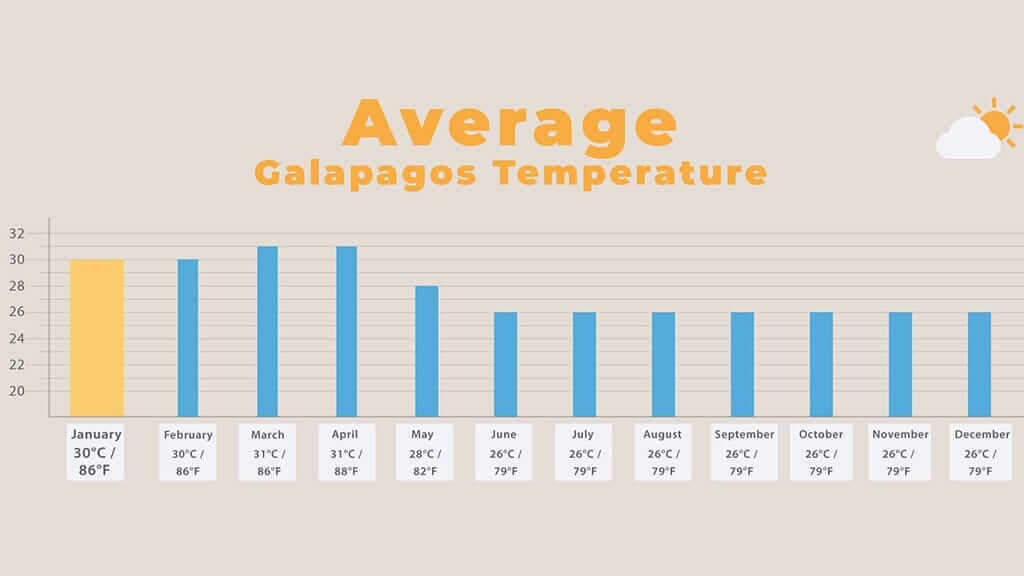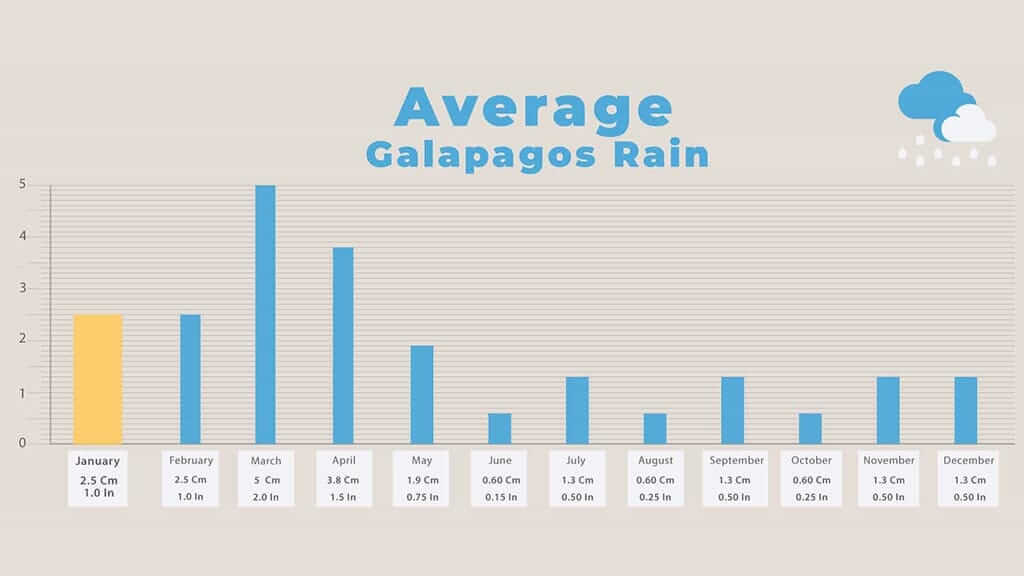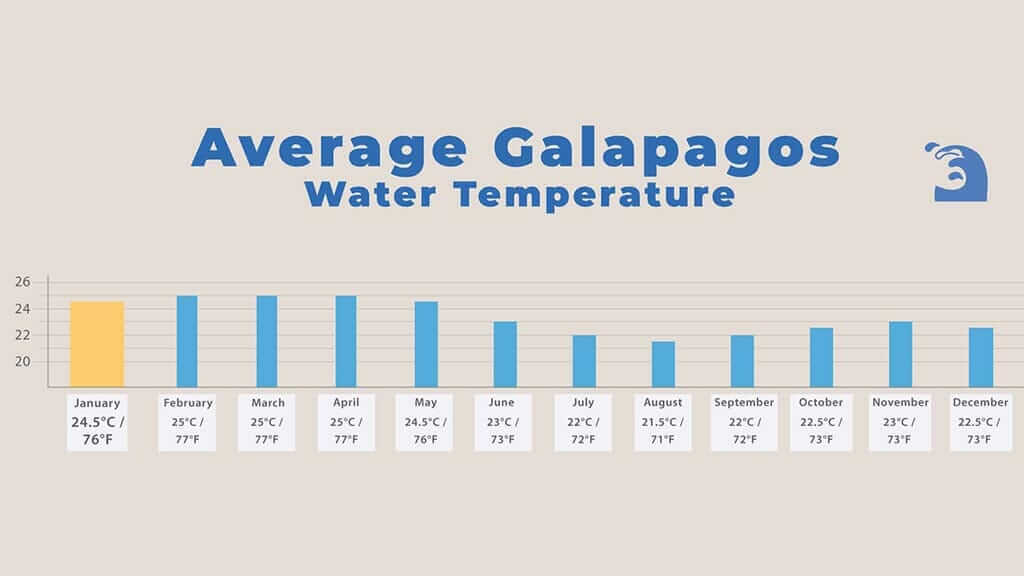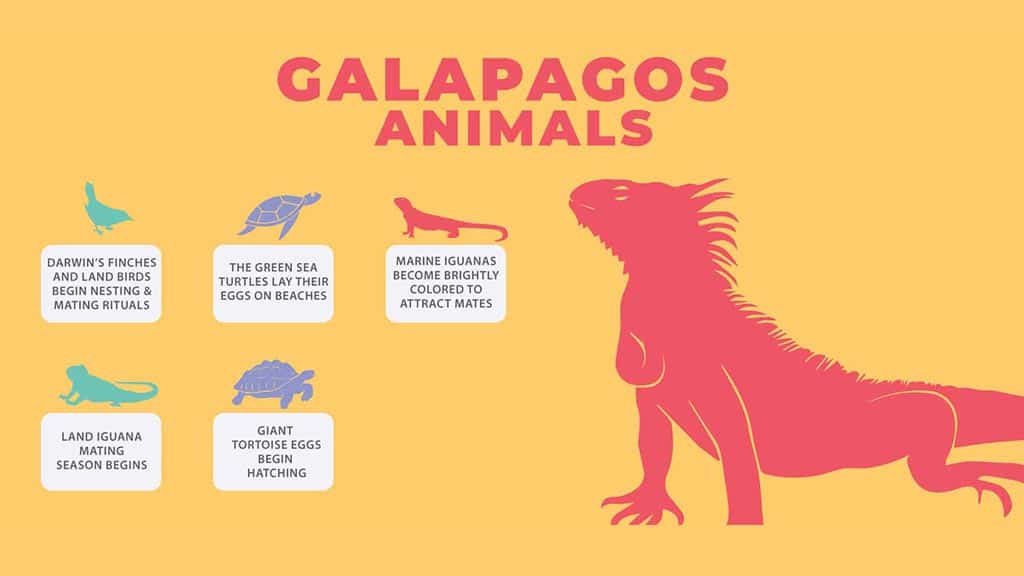Galapagos Weather in January
Is January a Good Month to Visit the Galapagos?
One of the most common questions we get asked is: when is the best month to travel to the Galapagos? Is our vacation to the Galapagos in January a good idea, or should we go in December or February? Is it too hot/cold/rainy in Galapagos in January? Are the January Galapagos seas warm enough for swimming? Our answer is always the same – January is a great month at the Galapagos, and so too are all the other months! The Galapagos Islands are an all-year-round travel destination, with comfortable weather and great wildlife viewing every month of the year. So yes, January is as good a month as any to visit the Galapagos.
Read on for everything you need to know about the Galapagos Weather in JANUARY – average temperatures, rainfall, and wildlife highlights.
SECURE YOUR GALAPAGOS TRAVEL
Get a FREE personalised quote todayWhat to expect at the Galapagos in January?
January Galapagos Weather Season:
January is at the start of the WARM & WET Galapagos season, so expect plenty of sun, with occasional heavy showers, and some humidity. Sunblock, a hat, and sunglasses are a must because sun rays are very strong this close to the equator. A light rain jacket is worth keeping handy too, just in case.

January Galapagos Wildlife Season:
In WARM & WET months like January, the rains and sunshine are beginning to transform the island highlands into a lush and green Paradise. January in the Galapagos is perfect for land species such as the Giant Tortoise, Land Iguanas, Darwin Finches & other land birds, who find food plentiful and are very active.
Don’t worry, the Galapagos marine species are also easily spotted in January, even though the warmer seas mean fewer nutrients for them to feed on. January is a great month for Galapagos snorkeling and swimming, usually, no wetsuit is required.

January Galapagos Tourist Season:
January starts off with HIGH demand for Galapagos cruise spaces in the first week of the new year, dropping down to REGULAR demand for the remainder of the month. January is also a good month for Galapagos Land Tours.

Galapagos Weather in January (in charts)
January in Galapagos is a pleasant month to travel - the sun is just beginning to shine, but few of the rains have yet arrived on the islands. Temperatures average 30 degrees Celsius, with just 1 inch of rain falling through the month. So most days you’ll be in shorts and a T-shirt and slapping sun cream on your back, but it’s a good idea to keep a raincoat handy too, just in case of January showers.
Average Galapagos Temperature in January
Rainfall in the Galapagos in January
GET FREE ADVICE
From a Galapagos destination expert todayGalapagos Water Temperature in January
January is a month with increasing water temperatures, averaging a pleasantly warm 24.5 degrees Celsius, making it a great month for swimming and snorkeling. Most January Galapagos visitors will not need a wetsuit to enter the waters.
Galapagos Wildlife in January
Is January in Galapagos a good month for wildlife? Remember, every month at the Galapagos Islands (including January) is amazing for wildlife spotting, and almost all land and marine species can in fact be found all year round.
That said, each month does bring something different to the archipelago. Subtle changes in Galapagos animal behavior such as breeding, nesting, hatching, feeding, growing, and migrating. The Galapagos natural world is in constant change.
In January at the Galapagos, we can see the difference in behavior between land tortoises and marine turtles. The former has eggs that are hatching, while the latter is swimming ashore to dig her burrow and lay eggs. If you visit sites like Bachas Beach on Santa Cruz island you might spot the tell-tale signs of flipper trails leading up to the dunes. The gender of turtle and tortoise hatchlings depends on the temperature of egg incubation. Warm eggs produce female babies (Hot Babes), while cooler eggs produce males (Cool Dudes).
January in Galapagos is also an active month for iguanas. Land iguanas are just beginning their mating season, trying to impress potential partners. Marine iguanas also start to transform into brighter colors, making them more attractive to the opposite sex. This is particularly spectacular on Espanola island - the marine iguanas found here are known as "Christmas Iguanas" as they change their skin color to green and red.
Land birds like Galapagos Finches also love this month and start nesting once January's first Galapagos rains have fallen.
It's a sad month for the Galapagos albatross though - the colony has now left the archipelago seeking richer fishing grounds in open ocean - they won't be back on Galapagos shores until April. If any tardy albatross has not yet left the besting site, he/she will be stranded as the winds drop making take-off impossible.
Last but not least, January at the Galapagos Islands is arguably the very best month to spot Scalloped Hammerhead Sharks. These elegant creatures are attracted by the warmer tropical sea temperatures, especially at Darwin and Wolf islands which can visited on specialist live aboard cruises.
Check out the infographic below for some of the special wildlife highlights to expect at the Galapagos Islands in January.
We really hope that this January in Galapagos blog was useful for trip planning. If you are looking for a complete summary of the Galapagos climate across the year, then also check out our general Galapagos Weather blog.
If you need any help planning your Galapagos Vacation (in January or any other month!), then just drop us a line.
Happy Gringo has over 18 years of experience as the trusted choice in Galapagos travel and has received special recognition from TripAdvisor for 8 consecutive years. We specialize in Galapagos Cruises, Diving Tours, and Custom-Made Galapagos Land Trips. We’d love to hear from you.
The #1 Trusted
Galapagos Travel Agency
In conclusion, Galapagos Weather in January makes it a terrific month to visit with sunny blue skies. The highlands vegetation zones are just beginning to transform after the first rains, with vegetation turning green and starting to bloom. Land birds and animals spring into life and are especially active, making top wildlife spotting opportunities. Galapagos Islands Marine life is also plentiful, including increased chances of crossing paths with Hammerhead Sharks - a huge tick for any avid diver!








